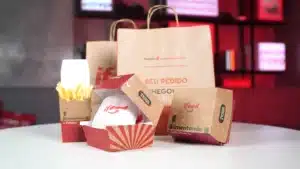Launched in 2018, the Global Commitment to a New Plastics Economy reaches its fourth year with good news and bad news. This movement around a circular economy on plastics is led by the Ellen MacArthur Foundation, in collaboration with the United Nations Environment Program (UNEP), and has gained membership from more than 500 companies, governments and organizations around the world.
At the report released in October 2022, the main good news is that the share of plastic recycled after consumption has increased from 4.8% in 2018 to 10% in 2021. “While it took decades for companies to reach the 5% mark, signatories have doubled to 10% in just three years”, points out the document.
Furthermore, the use of recycled material in plastic packaging continues to increase strongly and has doubled in the last three years. The majority (59%) of brands and retailers signing the pledge have reduced their use of virgin plastics.
Even with all this effort, the report points out that the majority of companies signing the commitment will not fulfill their promise to use only reusable, recyclable or compostable plastic packaging by 2025. Today, they represent 65.4% of the packaging used by brands, a slight increase compared to 2019 (63.2%).
“The latest findings demonstrate the need to urgently intensify efforts, both by companies and governments,” comments Inger Andersen, executive director of UNEP.
Sachets and plastic films are the biggest challenge
According to the document, “measurable progress is being made towards the Global Commitment, but the use of flexible packaging and lack of investment in collection and recycling infrastructure means that the target of reusable, recyclable or compostable 100% plastic packaging by 2025 is becoming unattainable.”
For the target to be achieved, companies would have to exponentially increase the use of recycled material, at a rate of 5.4% per year. However, in 2021 there was an increase of 2.5% in the use of plastic packaging, reversing the drop observed in 2019 and 2020. And 42% of them still do not have a reuse model in packaging strategies.
Flexible plastic packaging (such as sachets and films) is still a big problem, due to the difficulty of recycling — and one of the main reasons why most companies will not reach the target by 2025.
The solution, according to the report, is to gain scale in reuse strategies, innovate in products that are not flexible plastic packaging and reduce the use of single-use packaging, as recycling alone is not enough to eliminate plastic pollution.
“There is no point in being technically recyclable. Our definition of recyclability is that there is evidence that the infrastructure exists for recycling at scale,” tells Folha de S. Paulo Thais Vojvodic, manager of the New Plastics Economy initiative at the Ellen MacArthur Foundation.
She states that Brazil still needs to invest in collection and processing infrastructure to increase recycling levels. The country should join others to define the direction of recycling in November, when the Global Plastics Treaty begins to be negotiated in Uruguay, scheduled for 2024.
iFood's commitment to reducing plastics
iFood signed the #DeLivreDePlástico commitment, organized by UNEP and the NGO Oceana and has the goal of, by the end of 2022, implementing a solution to reduce sachet shipping of condiments for 5% of the restaurant base.
By 2025, the company wants 100% of the restaurants on the platform to give people the option to receive their order without condiment sachets — and to reduce the percentage of single-use plastic packaging in its operation by 50% (from 27% to 13. 5%).
Furthermore, iFood has the public commitment to end plastic pollution of delivery by 2025. One of its main initiatives, Amigos da Natureza, has allowed, since June 2021, people do away with sending forks, spoons, knives, straws and other plastic items in the delivery. As a result, more than 200 million orders have already been delivered without these items, and 510 tons of plastic were no longer discarded.


